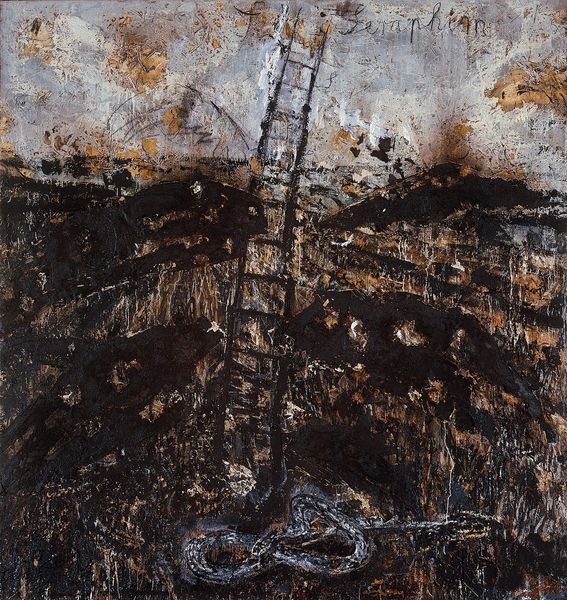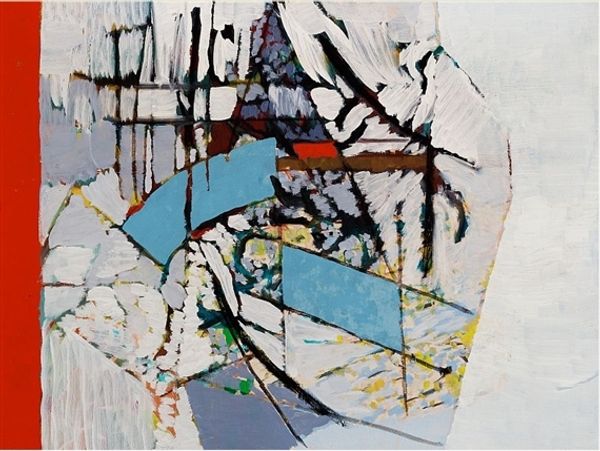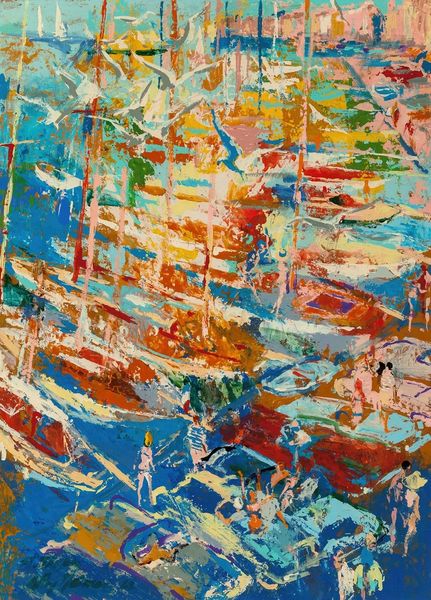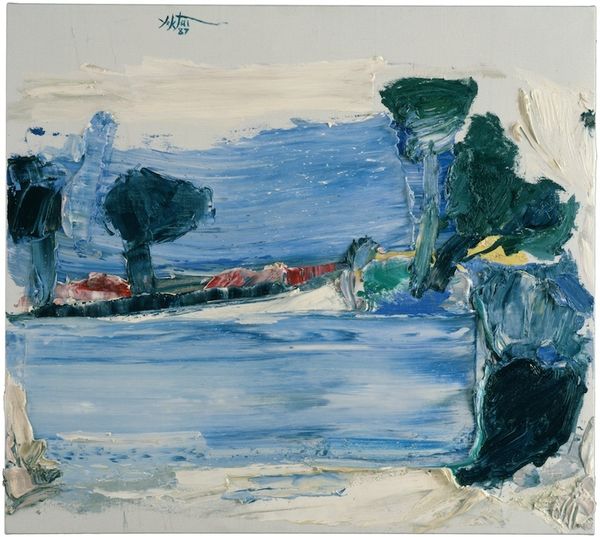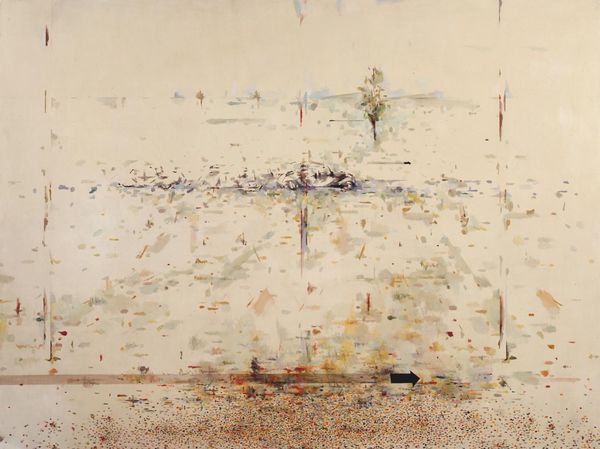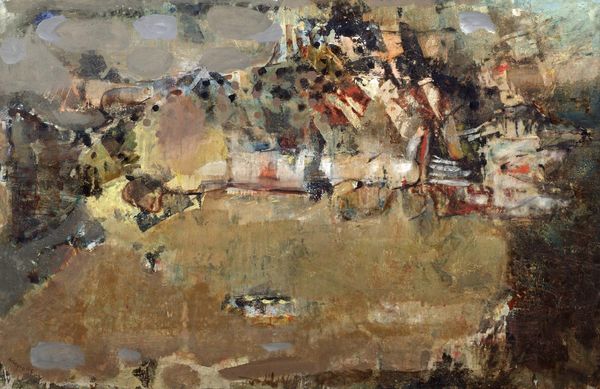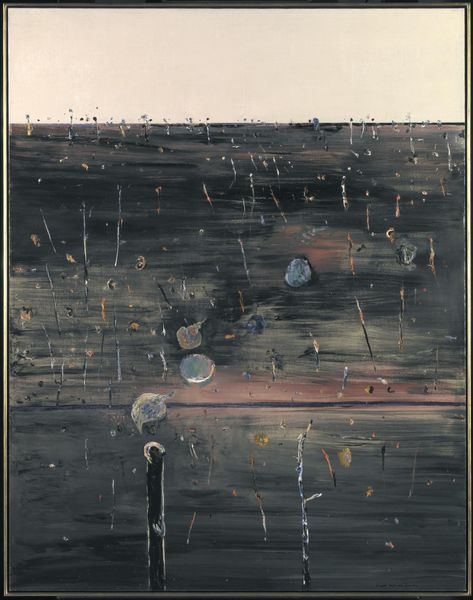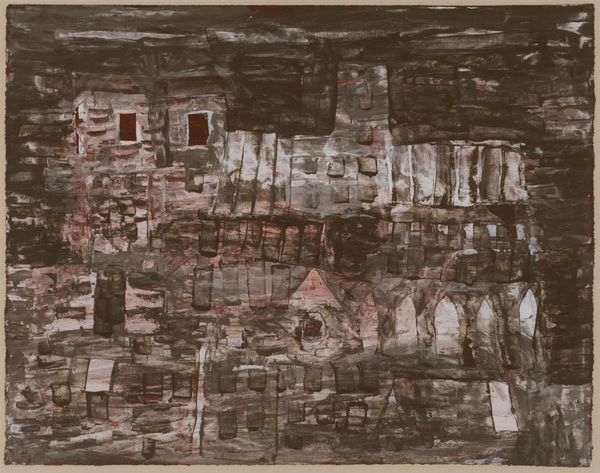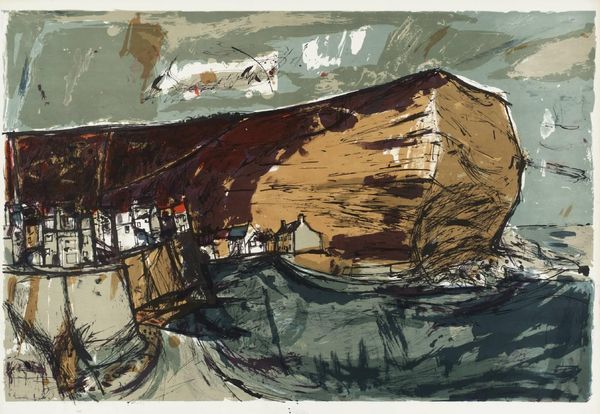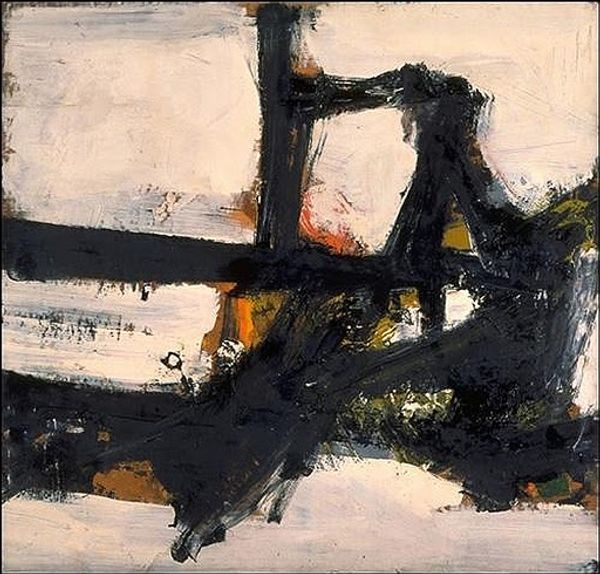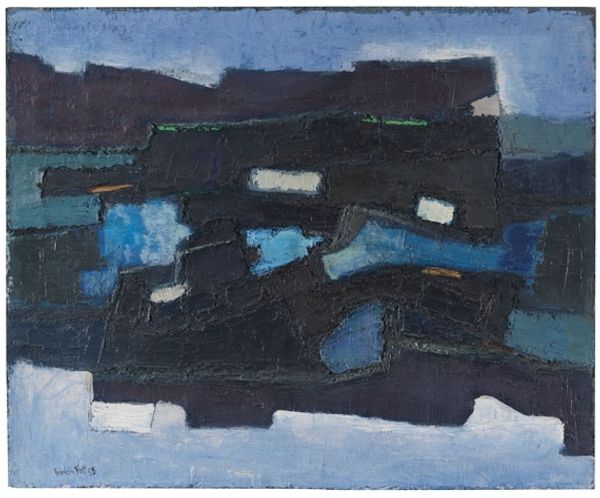
matter-painting, assemblage, oil-paint
#
abstract expressionism
#
matter-painting
#
assemblage
#
oil-paint
#
landscape
#
oil painting
#
neo-expressionism
Copyright: Anselm Kiefer,Fair Use
Curator: Right now, we are standing in front of Anselm Kiefer's 2010 mixed media piece "For Velimir Khlebnikov; The Doctrine of War; Battles". It's an assemblage on canvas, with oil paint and what seems like quite a lot of other materials. Editor: It immediately strikes me as a chaotic and oppressive work, really emphasizing a sense of the material world gone awry. The thick impasto of the paint alone conveys something quite turbulent. Curator: Precisely. Notice how Kiefer layers the paint almost sculpturally, building texture upon texture. Semiotically, the darkness speaks volumes, reflecting on themes of devastation. There’s an object that reads as a submarine too. Its presence significantly impacts the composition’s visual weight. Editor: Yes, that central submarine element, what is it constructed of? It feels very found, perhaps reclaimed materials rather than purely sculptural invention. And thinking of process – the physicality of layering such a diverse range of material prompts questions about the labor, the very act of construction, almost archaeological in its nature. It feels like something pulled out from the earth. Curator: I find it very much related to the theories of post-structuralism where meaning isn't inherently stable; each viewer brings their interpretations. Do you feel this instability represented in Kiefer's style connects to the turbulent materiality and form? Editor: Absolutely. The social context is hard to ignore – Kiefer's ongoing grappling with German history and warfare. Considering his techniques, that rough materiality becomes inseparable from those themes; it’s impossible to discuss it as a neutral exercise. Consumption becomes the flip side, a kind of destructive accumulation reflected by those stratified materials. Curator: What’s interesting is how this material exploration serves as both a carrier and creator of meanings that intersect in the philosophy and perception of time and memory. Editor: Right, that memory seems inherently intertwined with material reality. He reminds us that histories aren't just stories—they are formed in objects, landscape, and labor. I came in viewing disorder but am leaving feeling something profoundly anchored. Curator: And I am further aware of the power structure that’s at play in an image with that submarine in the middle of it. A material anchor becomes a metaphor about time.
Comments
No comments
Be the first to comment and join the conversation on the ultimate creative platform.


